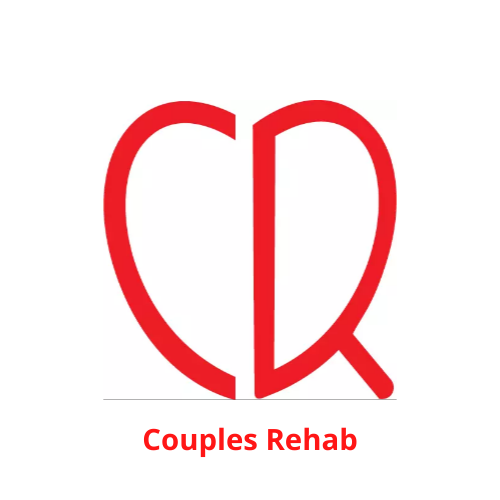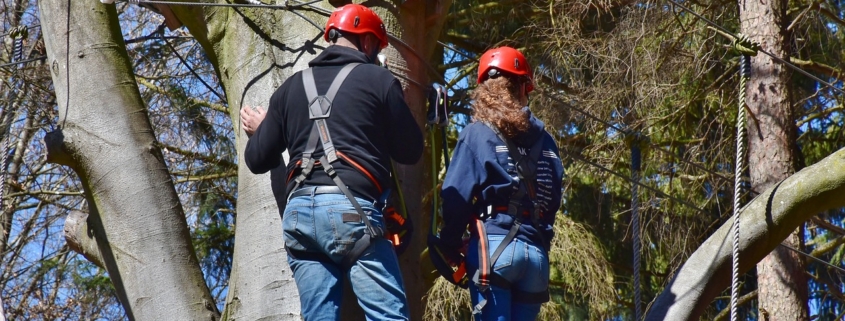Opioid addiction is one of the most challenging and widespread public health crises in Baltimore and across the United States. From prescription painkillers to illicit drugs like heroin and fentanyl, opioids can create a cycle of dependence that devastates individuals, families, and communities. This article delves into opioid addiction treatment in Baltimore, focusing on the path to recovery for couples, the importance of both residential and outpatient programs, detox options, sober living, and the effectiveness of Cognitive Behavioral Therapy (CBT). By exploring these facets, we can better understand how those struggling with opioid addiction can break free from dependence.
Introduction: The Opioid Crisis in Baltimore
Baltimore has been disproportionately impacted by the opioid epidemic, with rising rates of overdose deaths and addiction cases. The availability of opioids, coupled with socio-economic challenges, has left many individuals and couples caught in the web of dependence. Despite these daunting circumstances, Baltimore is home to numerous treatment centers that provide comprehensive care to help individuals regain control of their lives.
For couples facing opioid addiction, seeking treatment together offers a unique opportunity for mutual support, understanding, and healing. Couples Rehab programs allow partners to navigate the complexities of addiction recovery as a team, sharing their progress and setbacks, and ultimately building a stronger, healthier future.
Understanding Opioid Addiction
Opioids, whether prescription-based or illicit, are highly addictive. They work by binding to opioid receptors in the brain, producing pain relief and feelings of euphoria. Over time, the body builds a tolerance, requiring higher doses to achieve the same effects, leading to physical and psychological dependence. When individuals try to quit, they experience intense withdrawal symptoms, making it difficult to break free without professional help.
The Need for Comprehensive Treatment
Opioid addiction isn’t just about the physical dependence on the drug; it also involves emotional, behavioral, and social components. A successful recovery approach needs to address these layers through detoxification, counseling, therapy, and ongoing support in environments that encourage long-term sobriety.
Breaking Free from Dependence: The Role of Couples Rehab
Couples struggling with opioid addiction often share similar challenges but may also face unique dynamics in their relationship that can exacerbate substance use. In couples rehab, partners are encouraged to confront their addiction together, which helps strengthen their bond and allows them to hold each other accountable. Treatment programs for couples focus not only on the individual’s needs but also on improving communication, rebuilding trust, and fostering a healthier partnership.
Benefits of Couples Rehab
- Mutual Support: Going through treatment together allows couples to motivate and support each other. Witnessing your partner’s progress can be a powerful motivator to stay committed to your own recovery.
- Strengthening Relationships: Couples rehab focuses on healing the relationship as well as the individual. By addressing communication issues, emotional pain, and codependency, couples can rebuild a healthy, drug-free relationship.
- Tailored Therapy: Many couples benefit from a combination of individual therapy and joint counseling sessions. These dual approaches ensure that both personal struggles and relational dynamics are addressed.
Residential Treatment: A Comprehensive Approach to Recovery
For individuals or couples dealing with severe opioid addiction, residential treatment programs offer the most intensive level of care. In a residential setting, patients live at the treatment facility, away from the triggers and stresses of daily life, allowing them to focus entirely on their recovery.
What to Expect from Residential Treatment in Baltimore
- Detoxification (Detox): The first step in recovery is detox, a medically supervised process where the body clears itself of opioids. Withdrawal symptoms can be intense and uncomfortable, but medical professionals can provide medications to ease these effects and ensure a safe detox.
- Structured Therapy: After detox, patients begin a series of therapies, including individual counseling, group therapy, and couple’s sessions. These sessions aim to address the psychological aspects of addiction and teach coping strategies.
- Cognitive Behavioral Therapy (CBT): CBT is one of the most effective therapies for opioid addiction. This therapeutic approach helps individuals identify and change negative thought patterns and behaviors that contribute to their addiction. In couples rehab, CBT can also help improve relationship dynamics and reduce the risk of relapse by addressing triggers together.
- Holistic Treatments: Many residential programs offer holistic approaches such as yoga, meditation, art therapy, and fitness programs to promote overall well-being and stress management.
Outpatient Treatment: Flexibility in Recovery
Not everyone can commit to a full-time residential program, especially if they have work, family, or other obligations. For couples in this situation, outpatient programs offer a more flexible approach to recovery while still providing essential support and therapy.
Advantages of Outpatient Treatment
- Flexibility: Outpatient programs allow individuals to receive treatment while maintaining their daily responsibilities. They can attend therapy sessions during the day or evening and return home afterward.
- Continued Support: While outpatient treatment doesn’t require staying at the facility, it still offers access to therapy, medical support, and peer groups to maintain accountability and focus.
- Individualized Care: Like residential programs, outpatient treatment can be customized to fit the needs of each patient, whether that includes detox, counseling, or ongoing therapy.
- Gradual Transition: For those completing a residential program, outpatient treatment serves as a transitional phase to help individuals reintegrate into their daily lives while still receiving professional support.
Detox: The Crucial First Step
Detox is the critical first phase in opioid addiction treatment. Given the physical dependence opioids create, abruptly stopping their use can trigger severe withdrawal symptoms such as nausea, vomiting, muscle pain, anxiety, and insomnia. In a medically supervised detox program, patients receive care to manage these symptoms and make the process more tolerable and safe.
Medication-Assisted Detox
Medication-assisted treatment (MAT) is often used during detox to ease withdrawal symptoms and cravings. Medications such as methadone, buprenorphine, and naltrexone help by stabilizing brain chemistry, reducing cravings, and blocking the effects of opioids. This approach can greatly increase the chances of a successful detox and long-term recovery.

Sober Living: A Supportive Environment for Lasting Recovery
After completing residential or outpatient treatment, transitioning to sober living homes can offer additional support. These environments provide a drug-free space where individuals and couples can continue their recovery journey surrounded by peers who share similar experiences.
The Importance of Sober Living Homes
- Structure and Accountability: Sober living homes offer a structured environment with curfews, chores, and rules, promoting responsibility and discipline in daily life.
- Community Support: Living with others who are also in recovery fosters a sense of community and shared understanding, making it easier to stay on track.
- Bridging the Gap: Sober living acts as a bridge between intensive treatment and fully reintegrating into society, giving individuals the time and space to rebuild their lives and relationships.
The Role of CBT in Opioid Addiction Treatment
Cognitive Behavioral Therapy (CBT) is a cornerstone of effective opioid addiction treatment. This evidence-based therapy helps patients understand the link between their thoughts, feelings, and behaviors. By recognizing and challenging negative patterns, patients can develop healthier ways of coping with stress, cravings, and triggers.
How CBT Helps in Recovery
- Changing Thought Patterns: CBT teaches individuals how to identify and modify thoughts that lead to destructive behaviors, helping them regain control over their decision-making processes.
- Addressing Triggers: A key component of CBT is learning to recognize and avoid triggers—whether emotional, environmental, or relational—that could lead to relapse.
- Improving Communication for Couples: In couples rehab, CBT focuses on improving communication between partners, addressing codependency issues, and creating a supportive environment that reduces the risk of relapse.
FAQ’s
1. What is opioid addiction?
Opioid addiction is a dependence on opioid drugs, which include prescription painkillers, heroin, and synthetic opioids like fentanyl. It is characterized by a strong craving for the drug, increased tolerance, and withdrawal symptoms when not using the drug.
2. How can couples rehab help with opioid addiction?
Couples rehab provides joint therapy for partners dealing with opioid addiction. It helps improve communication, rebuild trust, and offer mutual support, making it easier to tackle addiction together.
3. What is a residential treatment program?
A residential treatment program involves living at a facility while receiving intensive care for opioid addiction. It includes detox, therapy, and holistic treatments in a structured environment to support recovery.
4. What is outpatient treatment?
Outpatient treatment allows individuals to receive therapy and support while continuing with daily responsibilities. It provides flexibility and includes counseling, medication management, and group therapy sessions.
5. What is detoxification (detox)?
Detox is the process of clearing opioids from the body under medical supervision. It helps manage withdrawal symptoms and ensures a safe transition to further treatment.
6. How does Cognitive Behavioral Therapy (CBT) help in addiction recovery?
CBT helps individuals identify and change negative thought patterns and behaviors associated with addiction. It teaches coping strategies to manage cravings, triggers, and stress.
7. What is sober living?
Sober living refers to a supportive, drug-free housing environment for individuals in recovery. It provides structure, accountability, and a sense of community as individuals transition from treatment to independent living.
8. Can couples rehab work if one partner is not addicted?
Yes, couples rehab can be effective even if only one partner is addicted. The non-addicted partner can learn how to support their loved one and address relationship dynamics that may impact recovery.
9. What should I look for in a rehab program?
Look for a program that offers a comprehensive approach to treatment, including detox, therapy options like CBT, and support for both individual and relationship issues. Ensure the program is licensed and has a good track record of success.
10. How long does treatment typically last?
Treatment duration varies based on individual needs. Residential programs generally last 30 to 90 days, while outpatient programs may extend for several months, depending on the person’s progress and recovery goals.
Embracing Recovery and Breaking Free
Opioid addiction is a powerful and complex challenge, but recovery is possible with the right treatment, support, and determination. Whether through residential or outpatient programs, detox, or the use of therapies like CBT, individuals and couples in Baltimore have a wide array of resources to help them break free from dependence.
Ready to take the first step toward recovery? At Couples Rehab Baltimore, we’re here to support you and your partner through every stage of your journey. Reach out to us today to learn more about our specialized opioid addiction treatment programs, including residential and outpatient options, detox services, and therapy sessions like CBT.





